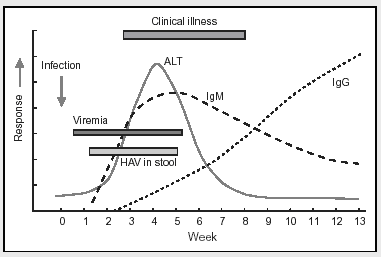Step 1: Prepare for the Investigation
Before embarking on an outbreak investigation, consider necessary preparations:
- If the disease is known, research it paying particular attention to symptoms, case definitions, modes of transmission, diagnostic tests, control measures, etc. Quickly make yourself knowledgeable about the disease. There are many excellent online resources:
- The Massachusetts Guide to Surveillance, Reporting and Control
- The MDPH communicable disease Factsheets
- The CDC's Case Definitions for Infectious Conditions Under Public Health Surveillance
- The CDC's Case Definitions for Chemical Poisoning
- The CDC index to Diseases and Conditions and
- The CDC's index of Parasitic Diseases
- You should also make a list of necessary supplies and equipment and make sure you have everything you will need.
- Since outbreak investigations frequently involve multiple agencies and jurisdictions, coordinate with them to clarify your role in the investigation and establish contacts.
Step 2: Verify the Diagnosis & Presence of an Outbreak
We noted that an outbreak is an increase in the frequency of a disease above what is expected in a given population. However, an apparent outbreak can result from either incorrect diagnoses, multiple diseases with similar symptoms, or even changes in record keeping or surveillance practices. It is important to establish that the outbreak is real by examining how the cases were diagnosed and by determining what the baseline rate of disease was previously. For reportable diseases, baseline rates of disease (i.e., the usual or expected rate) can be determined from surveillance data, and you can compare rates during the previous month or weeks with the current rates of disease. For non-reportable diseases or conditions you may be able to find baseline data from state or national vital statistics, from disease registries, or from hospital discharge records, such as the Massachusetts Health Data Consortium. If you have detailed data on the number of cases of disease over time, an epidemic curve is an informative way to display this data graphically, and an epidemic curve can also provide clues about the source of infectious disease outbreaks, as we will see later.
Be aware that apparent changes in disease frequency can result from:
- Changes in case definitions or changes in local reporting procedures
- Increased interest in a disease because of local or national awareness might result in greater scrutiny by health care workers or more frequent requests from patients for exams and diagnostic procedures
- Improvements or changes in diagnostic or screening procedures (e.g. introduction of the prostate-specific antigen test for prostate cancer resulted in an apparent increase in the frequency of prostate cancer)
- Sudden changes in the size or composition of the population (e.g., students returning to school in the fall or an influx of migrant workers)
Laboratory testing can be important for several reasons:
- It can provide verification of the diagnosis. It is not necessary or feasible to confirm the diagnosis all cases, but verification in at least a subset is important. It is also important to verify that lab results are consistent with the signs and symptoms that were reported.
- For bacterial diseases DNA fingerprinting through Pulsed Gel Field Electrophoresis (PGFE) can be extremely helpful in establishing that cases were exposed to the same strain of bacterium and, presumably, from the same source. PGFE can be particularly useful as a way on connecting cases that are geographically far apart, for example, during multi-state outbreaks. Once PGFE is conducted, the data are entered into PulseNet, an electronic database created through a collaboration between CDC and the Association of Public Health Laboratories (APHL).
- Serological tests can also be valuable. For example, with hepatitis A infection (a virus) there is a well characterized pattern of changes in serological tests that not only establish that an individual has been infected with hepatitis A virus, but can also distinguish between recent (or pre clinical) infections and infections that occurred in the past. This is illustrated in the figure below, which illustrates changes in anti-HAV (hepatitis A virus) antibodies over time after an acute infection.

Anti-HAV antibodies of the IgM class rise very promptly after infection with the virus, even before symptoms occur. Over time IgM anti-HAV antibodies decline and are progressively replaced by the anti-HAV IgG antibodies that confer long-lasting immunity to HAV. Therefore, high titers of IgM anti-HAV indicate recent infection, while high titers of IgG anti-HAV indicate that the individual was infected in the past and is now immune. For more detailed instruction on the use of serological tests for hepatitis, please see CDC's Online Serology Training.
For more information on laboratory testing see the following from the Focus on Epidemiology series:
- Laboratory Diagnosis: An Overview
- Laboratory Diagnosis in Outbreak Investigations
- Collecting Specimens in Outbreak Investigations
- Laboratory Diagnosis: Molecular Techniques


